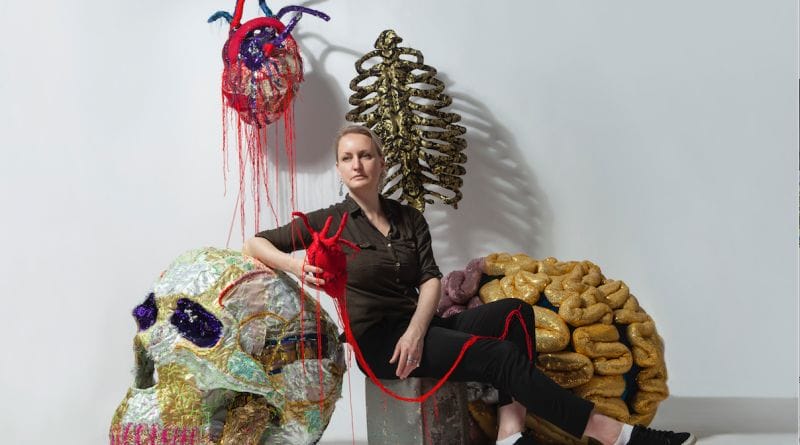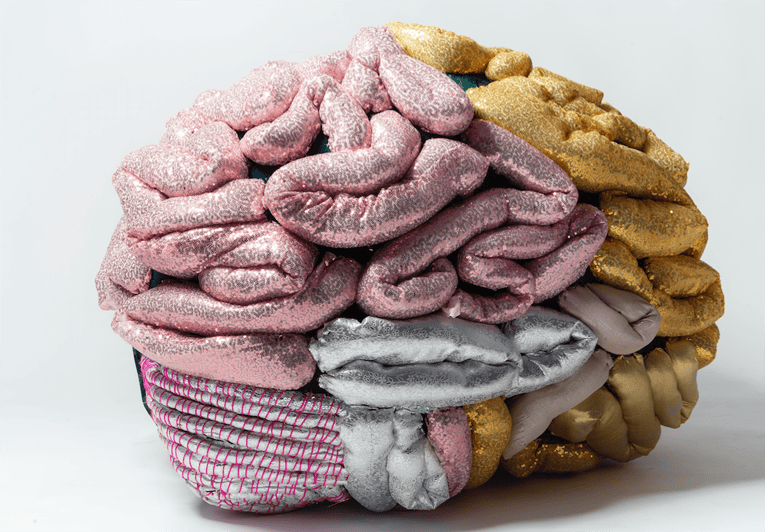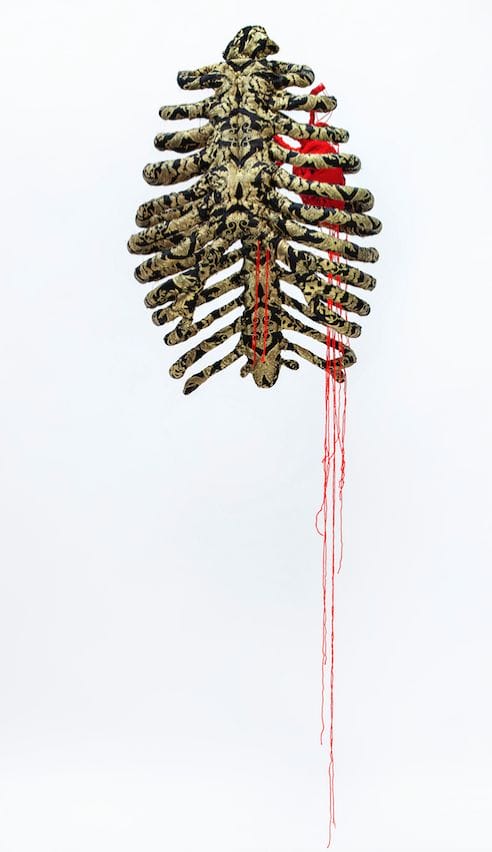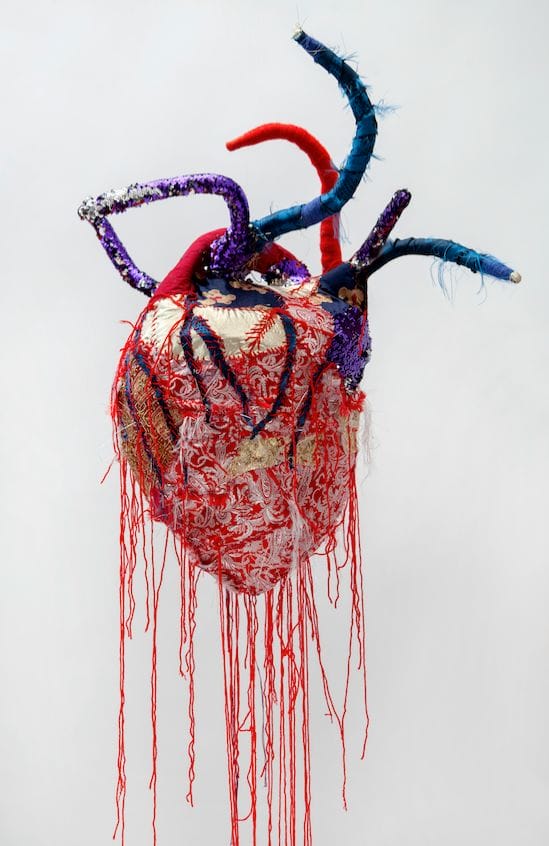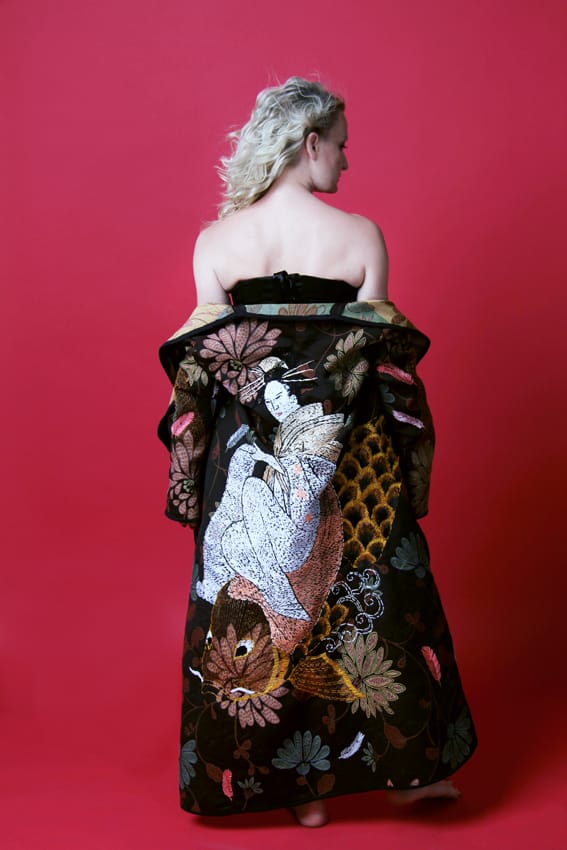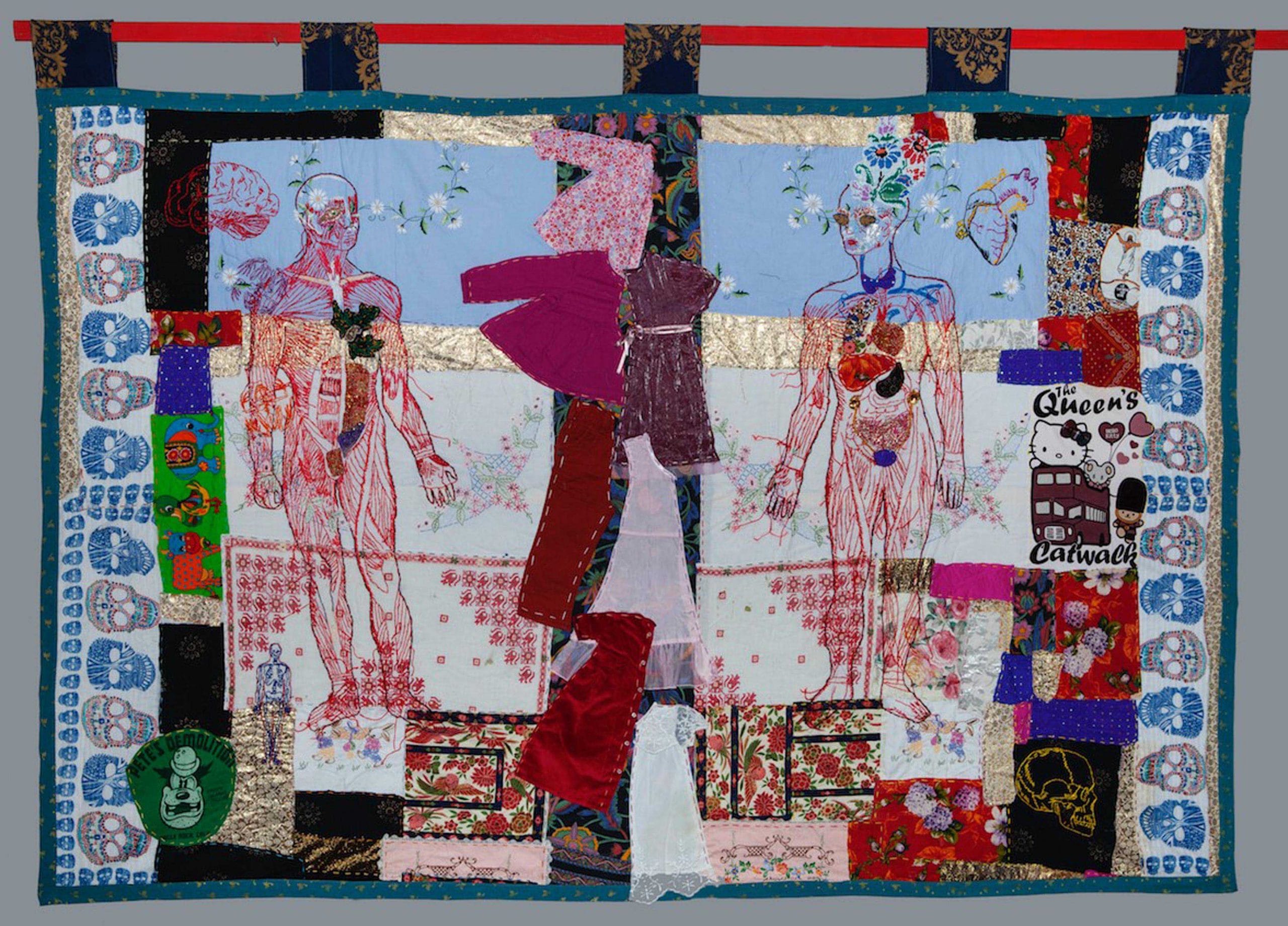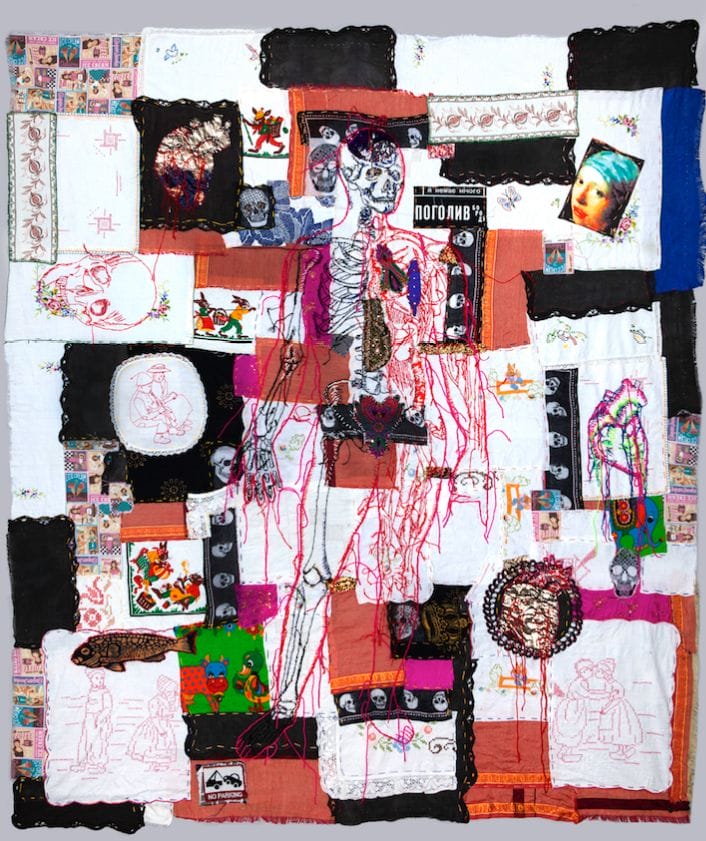ANASTASIIA PODERVIANSKA
*Featured photo: Anastasiia with textile sculptures, photography by Dariya Tishchenko-Zhuravel. Courtesy of the artist
Anastasiia Podervianska was born in Kyiv (Ukraine) in 1978 and graduated from the National Academy of Fine Arts and Architecture. A member of the Ukrainian Artists’ Union, her textile works can be found in private, museum and institutional collections in Ukraine, Germany, Poland and the USA. Awarded at the 8th World Biennial of Textile Art WTA, Madrid, (3rd place) and winner of the 5th Ukrainian Textile Triennial, she has exhibited in international solo and group exhibitions. With Voloshyn Gallery, her works were presented at the 2017 edition of SCOPE Miami Beach and at Vienna Contemporary 2018. Recent participations include “Transcending Boundaries” in Guadalajara, Mexico; “2021 NordArt”, Kunstwerk Carlshütte, Büdelsdorf, Germany and Verona Tessile 2019, in Italy. The following is what she shared with us about her research and her work:
Why did you choose the textile medium for your artistic practice?
I think, my interest in textiles emerged while working with my father on his theater performances as a costume designer. My first series of textile panels was created after reading a book by a Ukrainian historian Georgy Bulashov “Ukrainians in the legends, religion and beliefs” published in 1909. This book is a wonderful collection of literary folk art. These are myths, retelling of people, biblical motives.While reading the book I realized that would like to create a work series on these texts and they need to be done from textiles. I really saw how it might look in textiles. So the first work series was born. I think, just this book gave me a strong boost and the vision of what and how to do. Working with textiles gives me the opportunity to experiment with textures, shapes, colors. I constantly make discoveries for myself and so create new series not similar to the previous ones.
You use different techniques and materials for your works. How do you choose the ones and the others?
To my mind work with textiles is very multifaceted and a result is always unpredictable. Textiles are opening up new opportunities for creativity. I graduated from the Department of Monumental Painting at the Academy of Arts. Therefore, I am not afraid of large sizes of work. Being an artist I am attracted by different techniques and materials – hand embroidery, collage, oil painting. I already have a lot of practice experience and do everything almost automatically. I immediately see the composition of the work, realize what kind of fabric I should choose and where to attach it, where to embroider some elements. Sometimes I want to achieve pictorial receptions, repeat brushstrokes using hand embroidery. I’m not attached to a specific material and style. Self-expression is the main thing for me. My creative intuition always suggests the right choice.
How are your works born? Where does the inspiration come from and through what process do you transform the idea in the work of art?
Being a student at the Ukrainian Academy of Arts at the Faculty of Painting, I made many copies of the works of famous artists in museums. The copy gives the artist an opportunity to understand how the old masters worked, what artistic techniques they used in painting. I’m in constant dialogue with the great masters of painting. This is my way to reimagine art history. To be honest, I don’t know what inspiration is for a professional artist. Inspiration usually comes in while the work process being. The work process fascinates and draws me in. Anything can be an impetus for creation. If I am interested in a topic, I start working on it and try to translate my idea in the concrete material. Then I go to my studio and work, work, work…. until I get the desired result. That’s when inspiration comes.
From embroidery to textile sculptures, your works include large tapestries, small embroidered works but also three-dimensional sculptures. What relationship is established between artist, work and space in your artistic practice?
I try to break the stereotype of textiles as women’s arts and crafts using this technique as a contemporary art medium. Each project is a work series united by one idea and executed in the same key. I try to create new series aren’t similar to the previous ones with sophisticated and multilayered visuals combining various techniques. I was interested in the creation of three-dimensional forms in textile technology and began work on the series of textile sculptures.
The body is one of the recurring themes in your work. What is the ‘body’ and how do you relate to it? How does it enter your artistic investigation?
The image of human body has always been present in art. Five centuries ago an artist and an anatomist complemented each other and sometimes even combined in one person. Aesculapius’s scrupulous observations could not be transferred to anyone in the absence of mechanical fixation means of processes. Therefore, anatomists were required to either possess artistic skills, or invite artists to make documentary sketches. Later, the study of anatomy became mandatory for artist students/ They learned to harmoniously depict a person and admire his body. The first my work series with the human body was created in 2019. These were large textile panels called “Atlas of Human Anatomy”. I am interested in the human anatomy, the perfect artistic form of human organs. For example, the heart is a powerful symbol in world art. So you can say that I am the successor of the old artistic tradition.
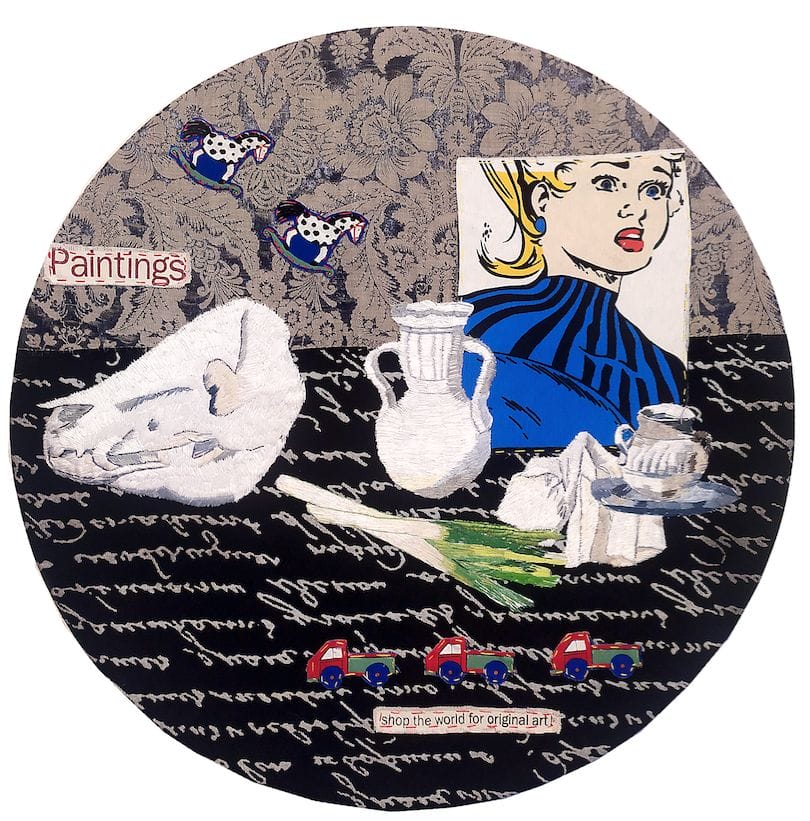
In many works, death is a recurring theme, sometimes in opposition or complementary to an explosion of life. What are the reflections behind these works and this research?
Life and death are almost merged together for a person in the natural environment. To my mind the meaning of human life is creation, self-improvement. A person must love life, be able to enjoy it, understand that life is the greatest, wonderfull and unique value. The world moves, lives, changes. Contemporary artists are looking for new ways connecting life and art. I am interested in this subject, and when you are interested in something, you are completely immersed in it. In my work series you can see birth and death, the world around people and much more… Each viewer sees his own, and I try to “catch” the viewer’s thoughts and make them mine. My sculptures and panels are multi-layered and you can find many meanings in them. That’s why I prefer not to explain the meaning of each of my works.
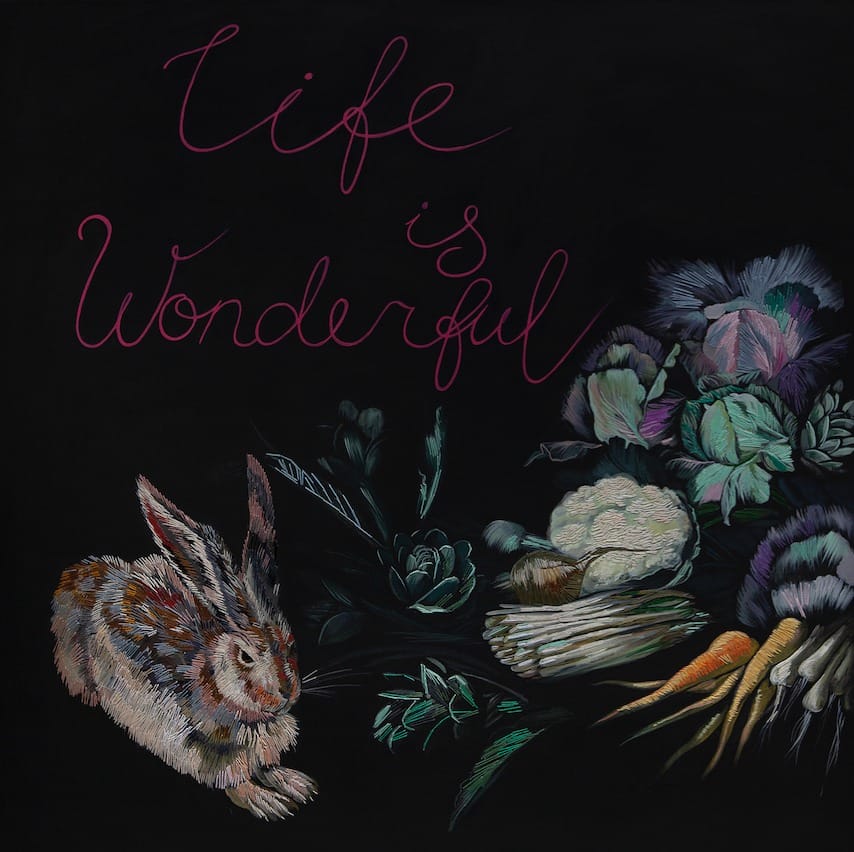
Can you tell me about your tapestries in which you intervene with pop embroidery elements?
I think there is an element of game in this process, a kind of entertainment when you lay out the canvas on the floor and start to assemble a puzzle on it. And suddenly you realize that this particular modern character should exist just here. And he starts his new life in your work. I like working with contrasts. My textile works contain elements of collages, brocade insets, patches of embroidered towels, hand-stitched lacework handkerchiefs and more. I try to combine traditional folk motives with the present time decor. Ethnic hand embroidery, modern print ornament, fabric applications are the elements of the image compositions.
What are the next art projects?
I still find it difficult to say something specific. I have many ideas. It is necessary to form them into a clear design. I need to decide how to do works, in what technique, what size. I’m still in the process of thinking. My task, as an artist, is to express myself through art and not leave anyone indifferent. I hope be succeed.
